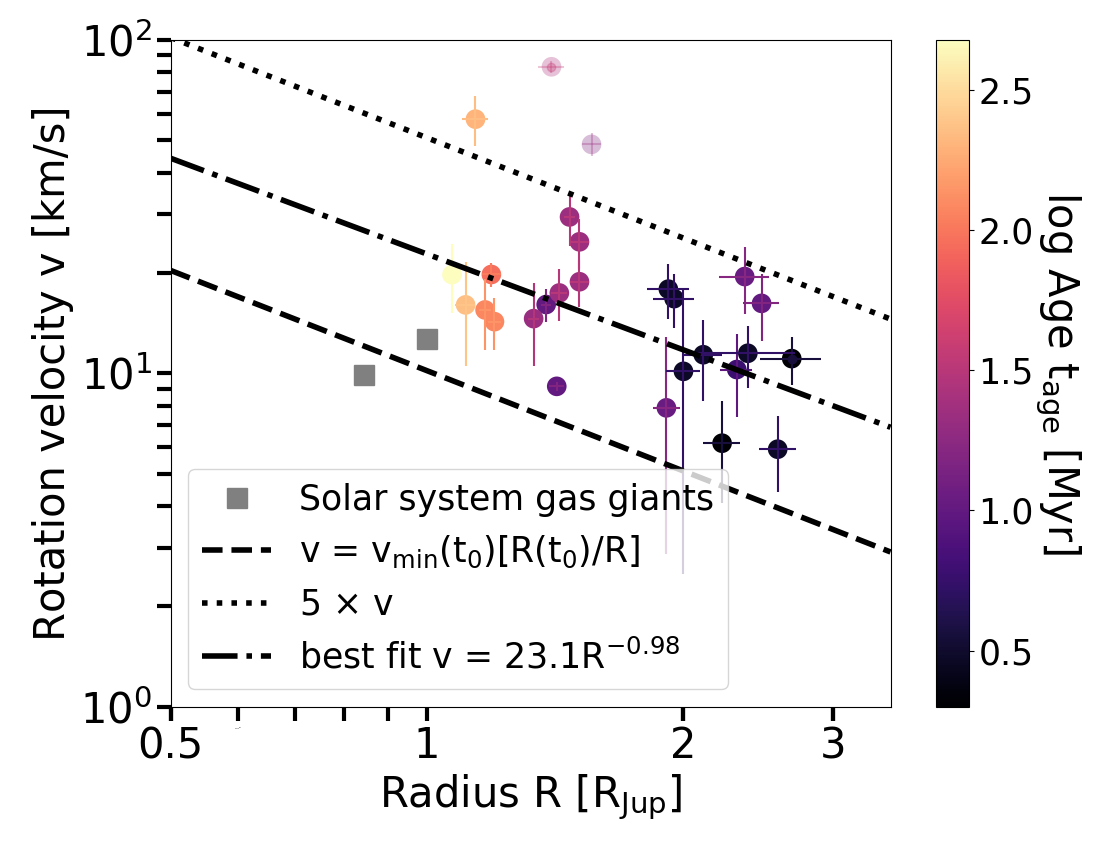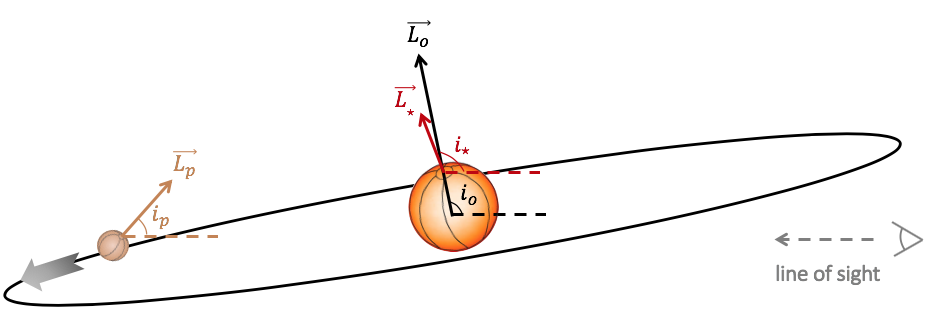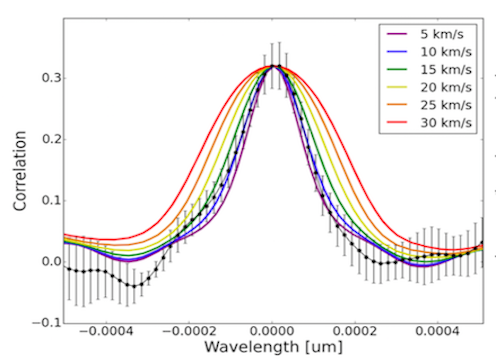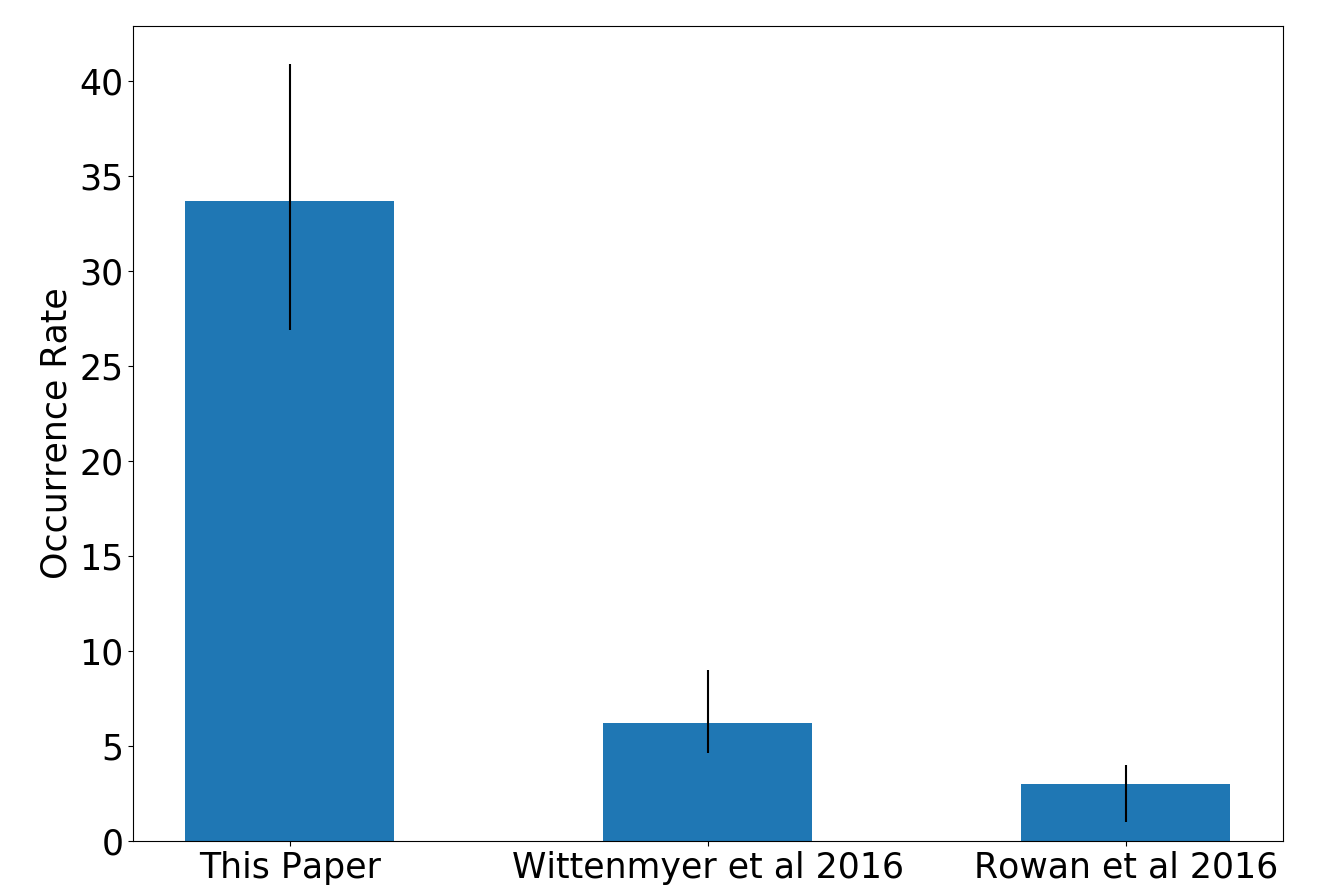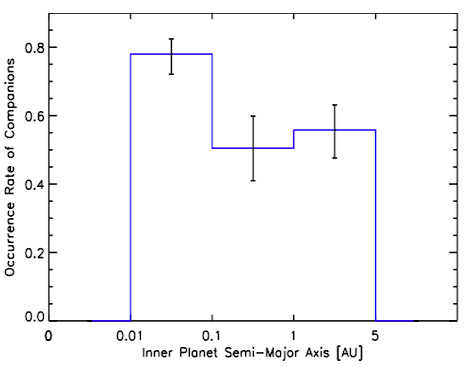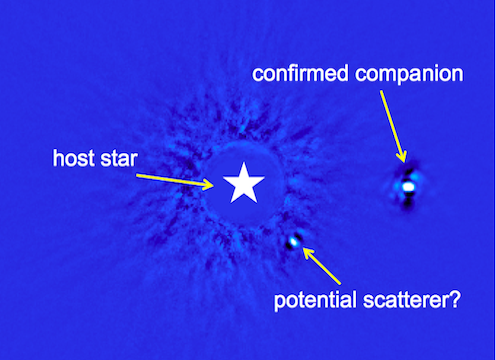Obliquity of an Extrasolar
Planetary-Mass Companion
The
obliquity of a planet, the
orientation of its spin axis
relative to its orbital plane,
reflects its formation and
evolutionary history. We
measured the first obliquity
of a planetary-mass companion
outside the Solar System. We
constrained all three of the
system's angular momentum
vectors: how the companion
spin axis, the stellar spin
axis, and the orbital plane
are inclined relative to our
line of sight. While the
stellar obliquity marginally
prefers alginment, the
companion obliquity favors
misalignment. Evaluating
possible origin scenarios, we
found that while collisions,
secular spin-orbit resonances,
and Kozai-Lidov oscillations
are unlikely, formation by
gravitational instability in a
gravito-turbulent disk appears
promising.
To learn more click here.

